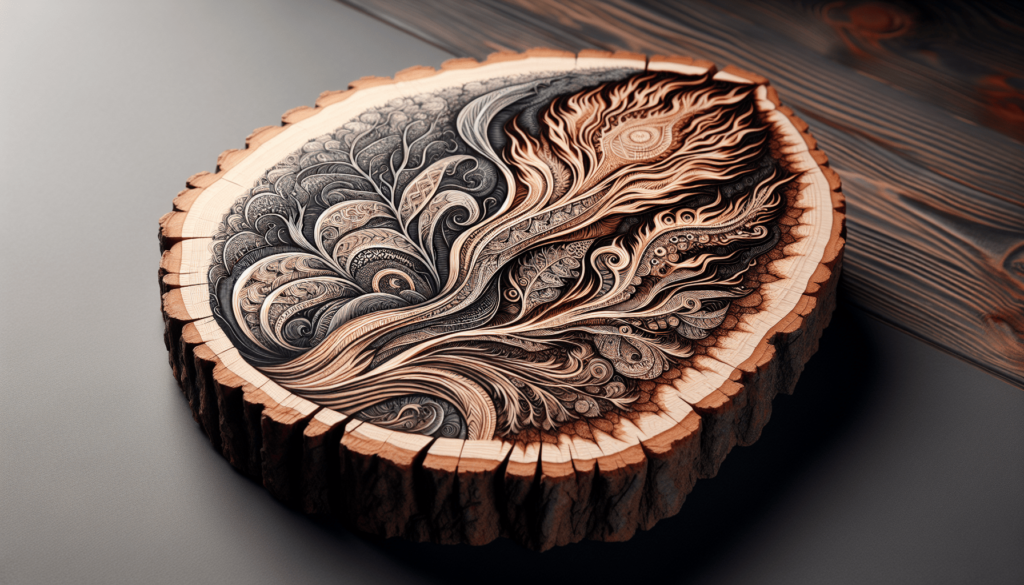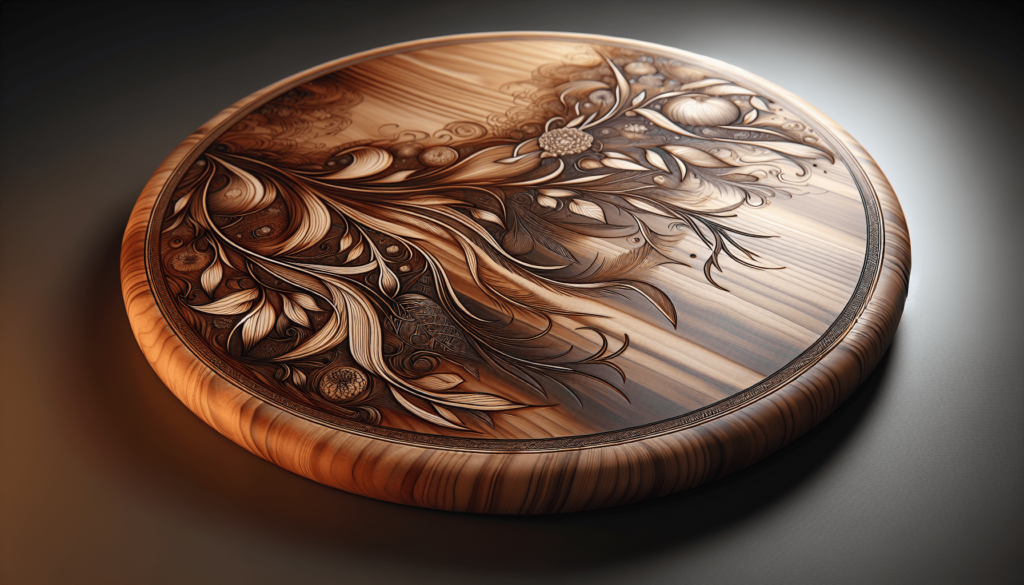When I first picked up my pyrography pen, I was overwhelmed by the variety of wood choices staring back at me from the lumber aisle. Each type of wood seemed to promise a different kind of adventure, a different kind of canvas for my art. After countless hours of trial and error, I’ve come to learn that the perfect wood can make all the difference in your pyrography projects. In my experience, some woods are just naturally better suited for burning intricate designs and achieving the rich, detailed results we pyrography enthusiasts crave. Have you ever found yourself standing in a hardware store, staring at a bewildering array of wood types and wondering, What is the best wood to use for pyrography? If you haven’t yet, consider this your fair warning: you might soon enough. Trust me, I’ve been there. It’s one of those moments where you realize that not all wood is created equal, especially when you’re about to sear intricate patterns into it with a hot iron.

Understanding Pyrography
Before diving headfirst into the world of wood choices, let’s peel back a layer. Pyrography, if you’re not entirely sure, is the art of decorating wood or other materials with burn marks. Imagine drawing with fire—it’s as fascinating and complex as it sounds. The trick is not just in the design but in choosing the right canvas, which brings us back to our original question.
Basic Needs for Pyrography
First things first, what makes a good wood for pyrography? Here’s a quick checklist:
- Smooth surface – The iron needs to glide, not hurdle.
- Light color – Contrast is your friend; a lighter wood makes the dark burn marks pop.
- Minimal grain – More uniformity results in less frustration.
- Low resin content – Trust me, the less sticky sap, the better.
Now that we’re on the same page, let’s delve into some common wood types and see how they measure up to our checklist.
Softwoods vs. Hardwoods
One of the fundamental divisions in wood types is between softwoods and hardwoods. The terms themselves are a bit misleading—some softwoods are actually quite hard, and some hardwoods, quite soft. But for pyrography, it’s a crucial distinction. Let’s set the stage for a softwood vs. hardwood showdown.
Softwoods
Softwoods come from coniferous trees, like pine, spruce, and cedar. This category often presents great options, but there are a few caveats.
| Wood Type | Characteristics | Pros | Cons |
|---|---|---|---|
| Pine | Light color, noticeable grain | Easy to find, low cost | Resinous, grain can be a challenge |
| Basswood | Very light color, fine grain | Smooth, consistent burns | Can be too soft, resulting in dents |
Pine
Pine is ubiquitous and cheap. If your first pyrography piece turns into an unexpected modern art fail, you won’t cry over the cost. However, beware of its resin content and pronounced grain. It’s like trying to color a crossword puzzle—awkwardly square and full of gaps.
Basswood
Basswood is a pyrographer’s dream. It’s lightweight, has a uniform texture, and handles burning beautifully. It’s like the plain white T-shirt of the wood world—perfectly serviceable, albeit not particularly exciting. But sometimes, you just need something that works.
Hardwoods
Hardwoods hail from deciduous trees—oak, cherry, and maple to name a few. These woods are generally denser and have a richer aesthetic but can also be more challenging to work with.
| Wood Type | Characteristics | Pros | Cons |
|---|---|---|---|
| Maple | Light to medium color, fine grain | High quality, durable | More expensive, harder to burn |
| Birch | Light color, smooth texture | Consistent, low grain | Can be harder to find |
Maple
Maple is like the luxury sedan of woods—comfortable, reliable, and stylish. Burning on maple produces clean, precise marks. But, oh boy, can it put a dent in your wallet. Also, it requires a bit more hand strength and patience when burning.
Birch
Birch is another solid contender. It’s smooth and fine-grained, often available in craft stores. However, it lacks the pizzazz that might make your work eye-catching. Think of it as the dependable yet unremarkable coworker who’s always on time but never stars in office gossip.
Specialty Woods: Uncommon Yet Excellent
Let’s veer off the beaten path. There are some lesser-known woods that are fabulous for pyrography but might not be the first to spring to your mind.
Poplar
Poplar is like the underdog in a sports movie—often under-appreciated but a sleeper hit. It’s light-colored, moderately soft, and has a fine texture. Just enough personality without being overbearing.
Sycamore
Sycamore, on the other hand, is like that one eccentric aunt everyone secretly adores. It’s light, with a beautiful, almost iridescent sheen that gloriously showcases burn patterns. Finding it might be akin to a treasure hunt, but oh, is it worth it.
Factors Affecting Wood Choice
Choosing the best wood involves more than just knowing which options are available. Several factors contribute to making an informed decision.
Availability
Availability is a significant consideration. It’s great knowing that some rare African hardwood is perfect for pyrography, but if you can’t source it without crossing several borders, it’s not practical. Opt for what’s locally available, without compromising too much on quality.
Cost
Money makes the world go round—your pyrography world included. Some woods are staggeringly expensive. Be realistic about your budget, and know that the most exotic wood isn’t necessarily going to turn you into the Picasso of pyrography.
Project Size
The size of your project will also guide your wood choice. For small, intricate designs, a high-quality, fine-grained wood might be worth the splurge. Larger projects might demand more cost-effective solutions, lest you end up taking out a second mortgage to fund your arty endeavors.
Personal Preference
Of course, personal preference plays a role. Some people love the challenge and aesthetics of working with dense, hard woods. Others would rather swim with piranhas than fight against grainy, resinous pine. It’s your call, and what works for one doesn’t work for all.

Preparing Your Wood
You didn’t think we’d skip over preparation, did you? After selecting your chosen wood, the prep work begins.
Sanding
Always sand your wood before starting. Even the smoothest boards can use a little TLC. Aim for a fine grit sandpaper, somewhere in the ballpark of 220 grit to give a buttery finish.
Cleaning
Get rid of the dust and particles post-sanding. A damp cloth usually does the trick, but make sure to let it dry thoroughly. No one likes a soggy pyrography canvas.
Test Burns
Before you launch into your masterpiece, do some test burns on a scrap piece of the same wood. It helps you gauge the wood’s reaction to the iron. Skipping this step is like jumping into a pool without checking if there’s water first—not recommended.
Conclusion: The Final Word
So, what’s the best wood to use for pyrography? It depends. Yes, I know, annoyingly vague. But it genuinely does. If you’re a beginner, basswood or birch could be your best bet. For more experienced burners, maple or sycamore might offer the combination of challenge and reward you’re after.
Ultimately, the best wood for pyrography is the one that fits your needs and makes you excited to create. Whether you’re etching delicate floral patterns or bold geometric shapes, your choice of wood will shape your artistic journey. So take a deep breath, channel your inner pyrography Picasso, and go forth to create something remarkable. And remember, it’s not just about finding the best wood—it’s about having a burnin’ good time doing it.

